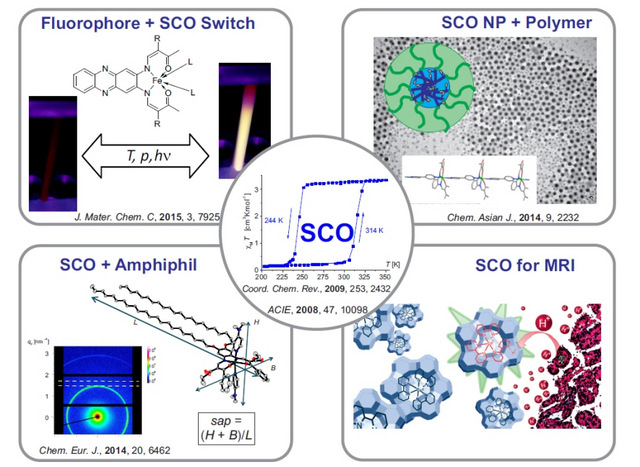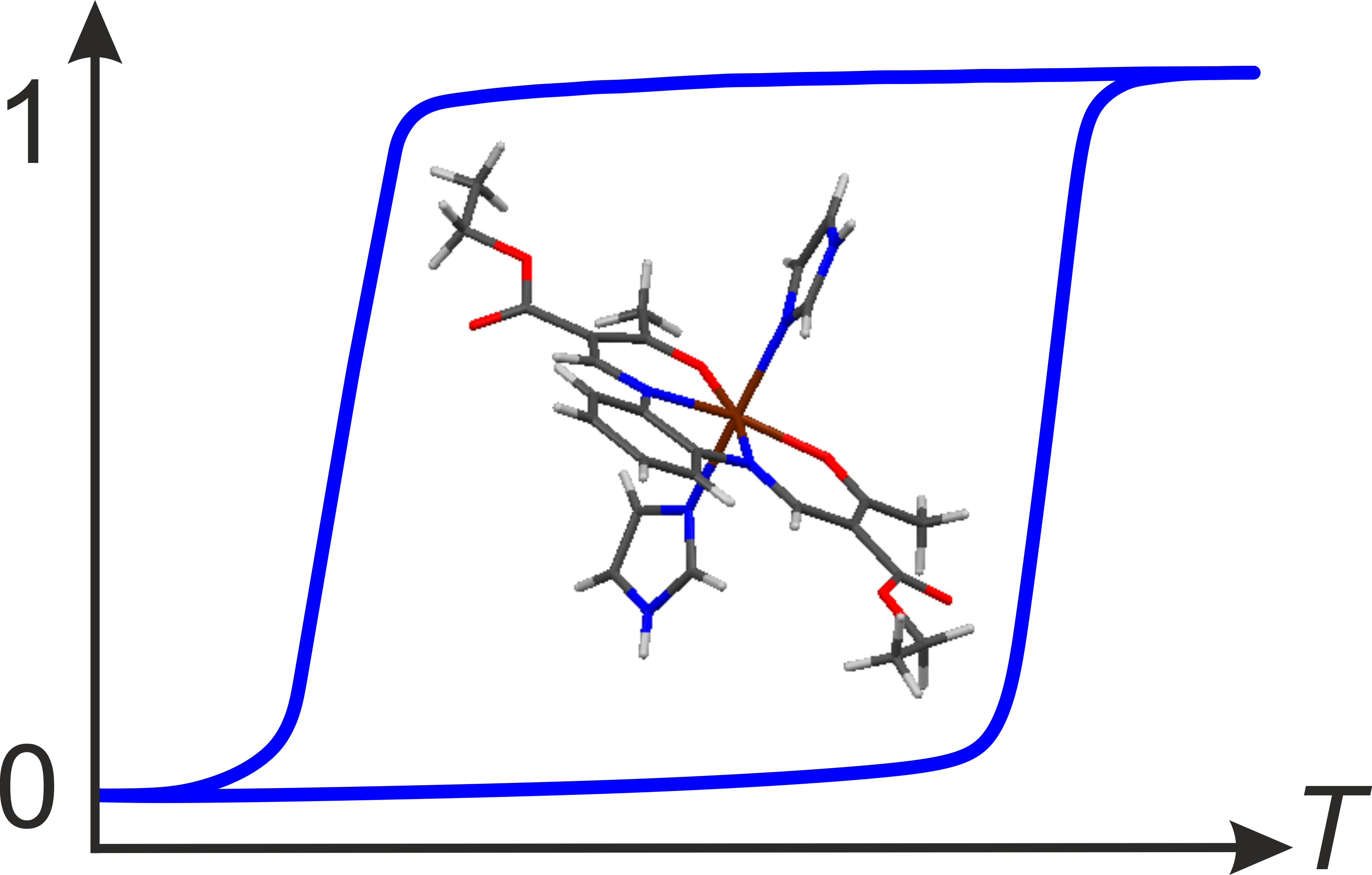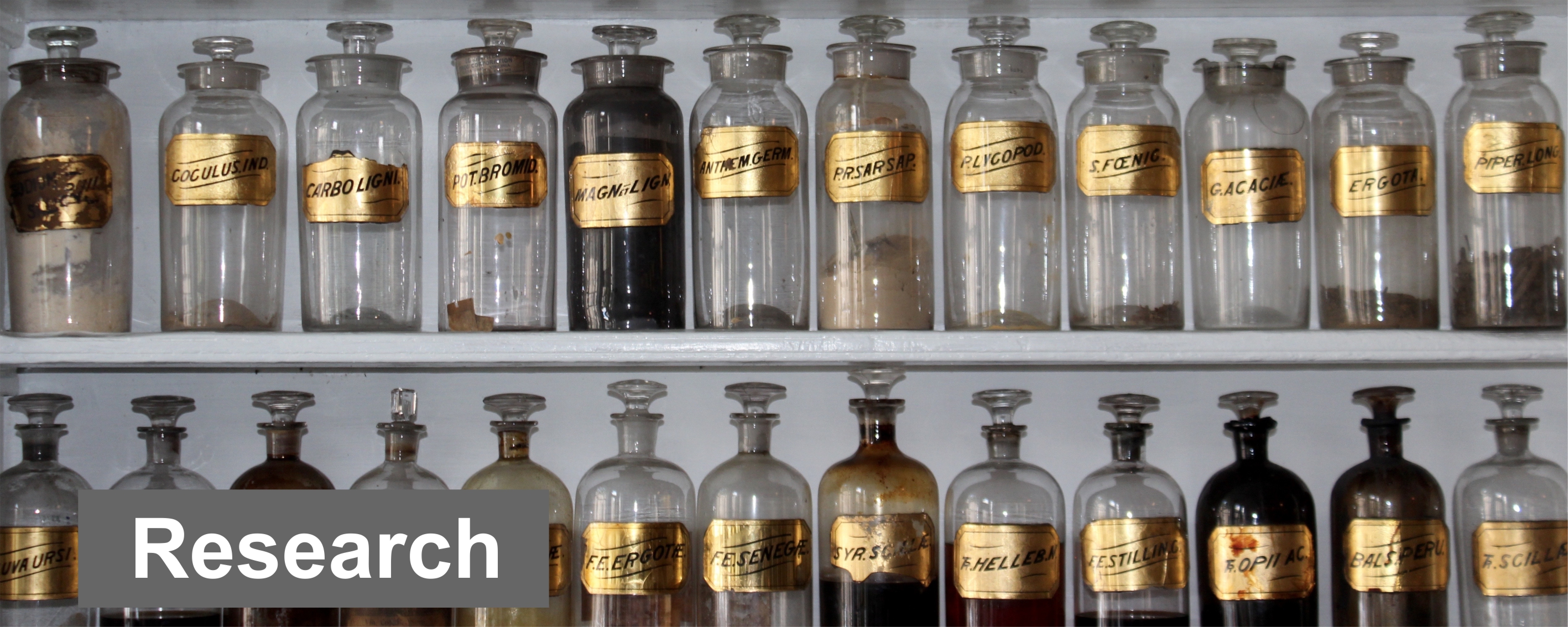Research
Switchable Molecules
Spin crossover (SCO) materials are a class of switchable molecules with a broad application potential in information technology or as sensors. Of special interest is the possibility to combine sensing element, memory and display in one compound. The wide application potential is reflected, for example, in discussions about the use of spin crossover systems as smart contrast agents for magnetic resonance imagining (MRI).
An external perturbation (e.g. changes in temperature, pressure, light irradiation, or the absorbtion/desorbtion of guest molecules in porous systems) triggers a spin state change between high spin (HS) and low spin (LS) state. This spin state switch is accompanied by a change of the properties of the material (e.g. colour, magnetism, volume). Especially the colour change enables the design of easily readable (with the naked eye) temperature and/or pressure sensors. For other applications (e.g. MRI) the change of the magnetic properties (for iron(II) between diamagnetism and paramagnetism) is of interest. For most of the potential applications abrupt spin transitions with wide hysteresis (memory effect) around room temperature are of special interest. However, depending on the planned application, also gradual or step-wise spin transitions are useful.

Since several years my research group investigates the factors responsible for the different types of spin transition in the bulk material. Cooperative interactions between the metal centres in the crystal lattice are needed for the observation of SCO with hysteresis. Based on systematic investigations on a series of mononuclear, dinuclear, and polynuclear SCO complexes with N4O2 coordination sphere I did demonstrate, that a combination of covalent and non-covalent intermolecular interactions is necessary for the observation of wide thermal hysteresis loop. Those interactions can be optimised in a crystal engineering like approach. Hydrogen bond networks appear to be especially suited for the realisation of highly cooperative spin crossover systems. Based on those information we were able to synthesise spin crossover complexes with over 70 K wide hysteresis loops. For a better understanding and predictability of the cooperative interactions during the spin transitions my group and I developed different models to explain the reason for wide hysteresis loops or step wise spin transitions. Those models allow us a purposeful synthesis of SCO complexes in a crystal engineering like approach.
Next to the understanding of the shape of the spin transition curve, it is highly important to control the transition temperature for future applications . In the case of gradual spin transitions this can be easily correlated and tuned with the ligand field strength of the used ligands. However, in the case of highly cooperative spin transitions, the spin transition temperature is dominated by packing effects. Consequently new approaches for the control of the spin transition temperature are needed. The synthesis of composite materials might be one possibility with regard to this. In the following Figure, an overview of the different research areas and questions is given.


